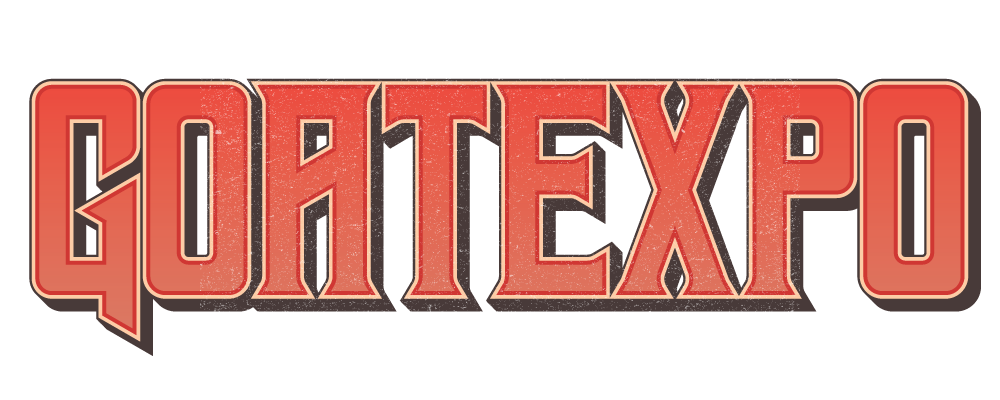
Dr. Frank Pinkerton – Chapter 2 #1
CHAPTER 2 MARKETING MEAT GOATS
1. Basics of Meat Goat Marketing
Introduction
This paper updates information concerning goat marketing practices and industry developments through fall 2009. I gratefully acknowledge the assistance of those in the industry who have shared their experiences and observations with me (some more freely, and a few less accurately, than others). Investigating marketing of goats and goat meat is difficult at best, and, at its worse, can be construed as a business intrusion or invasion of personal privacy. Accordingly, I am thankful that those few who declined to share information with me did so with a minimum of malice— I am much too old and way too fat for rapid retreats.
Any analysis of the marketing of a food commodity describes three major components: channels, demand, and supply, as also opportunities and constraints therein.
Marketing Channels for Goats and Goat Meat
The phrase, goat marketing channels, describes the movement of slaughter goats from originating producers to final consumers. The major pathways presently used to accomplish this movement are shown in figure 1. As you see, producers theoretically have six choices, but local/county auctions (or, for some, a near-by regional auction) are paramount. Producers only rarely sell directly to packers, but some may sell through a cooperative or to a nearby custom slaughterer or, increasingly, to individual customers (who may/may not slaughter on-farm, legally or not) (see article 8 in this Chapter for more on marketing goats from farm to consumer). Traders/brokers may buy from producers and from local auctions and sell to regional auctions or to packer/processors.
Because our goat production can not meet our demand, we import additional goat meat, mostly from Australia as carcasses or ‘six-packs’ (2 rear legs w/sirloins, 2 shoulders, 2 backs/ribs), or cubes (bone-in pieces about 2” wide x 6’ long of variable thickness); virtually all are frozen, stored in Australia, shipped here, put into frozen storage units until distributed to wholesalers and retailers. Over the past decade, imports have supplied some 45% of our needs (For further information on imports, see article 7 in this Chapter 6, Goat Meat).
In general, marketing channels with numerous players and those requiring diverse functions entail greater total costs than simpler ones. But, like any other livestock, goat marketing channels requires certain basic functions to be performed by various players; each player adds a cost (including profit). In sequence, these functions are: producing/selling, buying/collecting, transporting, slaughtering/processing, distributing, retailing, and purchasing by consumers.
As all may suspect, goat marketing channels do not engender equal treatment and equitably shared profits as between producers and players, nor, contrary to theory, do they always guarantee consumers lowest possible prices. In real life, all players in the channel freely-enterprise one another with marked enthusiasm and considerable resourcefulness, as also with mutual suspicion. Novices to the trade are well advised to proceed ever so carefully—a steep learning curve awaits the imperfectly informed because the free enterprise system’s presumed impartiality and beneficence, so much celebrated in economic theory, political oratory, and business literature, has no mandated provision for fairness, only for profit-taking. Caveat emptor is the telling Latin phrase—a warning to be ignored only at one’s peril.
Marketing channel costs vary by functions and by individual players performing them; so also do the profit margins realized by each player. As originating channel players, producers engender mileage/labor costs for hauling goats to the collection point (usually an auction) and for sales commissions ($3-6/head) plus ‘shrinkage’ (loss of goat weight between farm and auction—typically 2-3%).
Subsequent channel players buy and assemble the goats (about $1/head) and transport them to distant packers (typical TX-to-NJ cost/head is $7-10 depending on fuel costs). Thus, packers buy the goats, pay procurement/hauling costs, absorb the hauling shrinkage (4-5%) and engender slaughter, processing, and distribution costs of perhaps $10-12, plus a profit markup of perhaps $7-8/head. Packers expect to sell to retailers only 45-47% of their auction ‘pay-weights’. Retailers typically add about 30% of their wholesale cost to cover 1% shrink or so, operating expenses, and profit.
Generally, a Texas goat weighing 70 lb on-farm and sold at auction weighing 68 lb for $1.40/lb will provide only about 30 lb carcass weight at retail—about 43% saleable yield. In NYC a consumer would pay well over 3 times the live goat price/lb for each pound of carcass—currently nearly $5.00/lb. As a rule, both operating costs and profit margins in food businesses increase the closer the firms are to the consumer; goat meat is no exception.
Readers should understand that marketing channel costs are rather independent of prices paid to producers because a cheaper goat doesn’t cost less to haul or to kill or to merchandize. For example, a 10% cut in producer price from $1.40/lb to $1.26/lb on a 68 lb auction-weight goat ($9.52/head) would lower the packer’s cost of the 30 lb cold carcass by about 32 cents/lb ($9.52/30lb). The packer might/might not pass this ‘saving’ to the retailer who might/might not share it with consumers; only stiff competition might improve eleemosynary tendencies among downstream market players.
Goat Meat Demand
No USDA statistics or University studies are available to quantify national demand for goat meat. This is, in part, because during the past decade we have imported from a third to nearly half of our domestic consumption, and, in part, because, goat meat consumption is a negligible amount compared to that of other red meats; thus, research administrators do not consider it high priority.
We can, however, infer demand from known slaughter numbers, import quantities, and estimates of ‘informal kill’. Conversations with players in the northeastern metropolitan trade indicate occasional shortages of domestic and imported goat meat. Moreover, present demand may be outstripping supply as indicated by record high prices for goats and domestic goat meat and for imported goat meat.
In any case, foreseeable demand is thought to be trending steadily upward, probably in loose concert with the rapidly increasing ethnic population numbers and improved earnings per family. In point of fact, the demand for goat meat is largely ethnic-driven. I define an ethnic as any person, or group, whose ancestors got here after mine did; Native Americans must find the whole who-is-an-ethnic conundrum rather confusing, possibly even mildly amusing. Unfortunately, our per capita consumption of goat meat is much less than the one pound of lamb and mutton. Our consumption in ’06 of chicken, beef, and pork was about 88, 66, and 49 lb, respectively.
Adherents to the Muslim religion, regardless of geopolitical origin, and the burgeoning urban Latino populations are our primary consumers of goat meat. However, Oriental-Americans, Afro-Americans, Haitians and other Caribbean Islanders, as well as those of eastern European origin, are also appreciable consumers, as are Jews, Greek Orthodox, and Catholics. Our major goat meat markets are concentrated in the urbanized areas along the northeastern seaboard (Washington, D.C. to Boston), on the west coast (the Los Angeles basin, San Francisco/Sacramento, and Seattle), in inland cities (Atlanta, Dallas, Houston, San Antonio, Phoenix, Chicago, Detroit, Minneapolis, Cleveland) as well as Miami and San Juan, Puerto Rica.
All these urban areas contain large concentrations of ethnic groups, and several are currently major immigration target sites. Accordingly, future goat markets seem assured, unless, of course, the ethnic young should opt out irretrievably for burgers, pizza, and KFC—as, indeed, some are already doing, much to the distress of their elders.
There are certain discernible patterns in goat meat demand. There is a substantial base demand for goat meat across the entire year, but there are seasonal differences, demand seemingly higher in the winter than in summer with fall and spring being intermediate. Cultural holidays, religious or political in origin, create short-duration peaks in demand, usually with concomitant price spikes for consumers and, to a lesser extent, producers.
There are also patterns in consumer demand for certain carcass characteristics. Some groups prefer rather specific weights; for example, Muslims generally prefer carcasses 25-30 lb, while Latinos prefer smaller carcasses, particularly cabrito (little goat) carcasses weighing 10-18 lb from milk-fed kids; they do, however, take many larger, thinner (cheaper) animals. Preferred carcass weights for the Christmas and Easter markets range 14-22 lbs.
Bucks in the 100-200 lb range find a ready market among Jamaicans, Haitians, and East Africans, many of whom make a special soup of the testes and brains, plus assorted culturally-specific additives (not publicly identified as yet, fellows). This concoction, called ‘mannish water’ in Jamaica, is purported to be a male aphrodisiac and to bring substantial, if short-term, joy to conjugal partners. One may confidently envision no University research assessing the comparative efficacy as between this product and the recently arrived blue-marvel, Viagra, or Cialis which apparently works best if preceded by contemplative time in separate tubs (aquatic foreplay?).
Note that ethnic consumers tend to equate small carcass weights with younger age and younger age with more tender meat. Lighter lean meat color in goat carcasses is also thought to be closely related to youthfulness and thus to tenderness. Sex of goat seems of lesser consumer concern, particularly for animals under one year of age. Be aware that, while trying to develop a Certified Goat Meat Program in l997 (patterned on Certified Angus Beef merchandizing), we found that ethnic consumer sensory taste panelists could not distinguish between breed-types of kids, between male or female kids, between light (under 50 lb) and heavy (over 50 lb) kids, or among kids grading prime, choice, or good conformation (now called USDA/AMS Selection grades 1, 2, 3). Well, not quite; they did pick-out grade #3 yearling wethers as being less tender (but—at a price—still acceptable). There being no statistically valid differences, we were unable to proceed.
All we really know concerning consumer preferences for, or among, quality (conformation) grades of goat carcasses is that packer buyers in San Angelo and elsewhere demonstrate differing, recurring price responses to the three live grades. This multi-year data, for slaughter kids/yearlings in the 40-80 lb range, reflects price relationships among grades and between seasons, even as the general price levels rise across years. We may logically infer that packers paying live-goat premium prices for superior carcasses doubtless pass these on to retailers and thus to consumers, con pelone (a little something extra).
Readers should recognize that consumers of goat meat are concerned that carcasses be ‘meaty’, i.e., have thick, plump muscling (high meat-to-bone ratio) and only minimal external and internal fat and be as ‘youthful’ as possible. Intramuscular deposition of fat (commonly called ‘marbling’) in goat carcasses is low to absent; apparently, it is not a consumer concern.
In any case, consumers have not, to date, specifically signaled retailers or processors or producers regarding any novel characteristics that might constitute a more desirable goat carcass. Neither have they identified any pressing needs for primal or retail cuts nor for value-added products such as sausages, jerky, ready-to-cook or heat-and-eat items (however, only a few such items are currently available at scattered venues; perhaps availability itself is limiting greater interest).
Readers must recognize that consumers seem to have little awareness of, much less preferences for, goat meat from different breeds or their crosses. Carcass muscularity, no matter the source, seems to be the decisive consideration, along with carcass weight and color, as previously noted. Contrarily, there are now significant numbers of Boer-influence slaughter goats moving from TX and other states. Indeed, industry observers suggest that they may now total some 75% of sales.
We are told that packers believe such crosses to provide higher percentage of Selections 1 and 2 carcasses than do traditional Spanish-type goats, dairy goats, and other crosses. However, I suggest some of the grade improvement noted in live offerings may be due to improved feeding and management influences rather than to breed per se. Validating research is badly needed, as are more comparative carcass investigations to document, under experimental and commercial conditions, the claims for superior carcass quality, higher lean meat yields, and better price responses for Boers, Boer-crosses and other newer crossbreds.
Goat Meat Supply
Figure 2 documents the aggregate supply of U.S. goats since 1987. The long-term upward trend was interrupted in 2008 by wide-scale droughts that reduced the 1 Jan ’09 inventory figures by 2%. Adequate rainfall could permit resumption of this trend, though the rate of recovery could be influenced via producer confidence regarding prospective cost-benefit ratios to be achieved.
Figure 3 documents the historical trend in federally-inspected slaughter numbers and, since 2004, total federal/ state-inspected numbers. Notice the effect on domestic slaughter numbers of the 2008 drought as producers reduced inventory numbers. Note also the on-going effects of the ‘hundred-year’ drought in Australian on our import numbers in ’07 and ‘08.
To determine actual national consumption, the USDA reports of slaughter and import numbers and quantities of meat would need to capture figures reflecting the unknown numbers of goats that do not pass through state or federally-monitored facilities and thus are not reported. These mystery numbers may only be hinted at by comparing 1 Jan ’08 and 1 Jan ‘09 inventory numbers for meat goats and estimating ’08 kid crop born less kid crop held over to ’09….largely an exercise in futility.
In point of fact, we just don’t know—and can never know—the quantities of kids and adults that are killed on-farm or sold off-farm for local or other use or sold at auction to traders/brokers who move them to CA and FL groves, orchards and veggie areas in these states and to many others, where they are sold off-the-truck to eager-eaters who consume them with no thought to bureaucratic statistical niceties. Those knowledgeable of such informal sales are prone to guesses ranging from 50,000 to 100,000/year (something on the order of 10-15% of federal-state carcass counts).
Concluding remarks
In related papers, I discuss various producer options for increasing goat numbers, sizes, and grades of saleable meat as also my thoughts on certain industry developments and marketing trends. In the meantime, there is additional, more detailed information available on consumer preferences for goat meat, particularly holiday-related needs. See the chapter by Dr. tatiana Stanton, Cornell University, in the Langston University Goat Handbook; contact shart@luresext.edu.
Figure 2. Trends in total goat numbers, meat goats, Angora goats, and milk goats in the U.S.
Figure 3. Trends in U.S. federal goat slaughter, other (state) goat slaughter, total slaughter (federal + other), and frozen imported goat meat on a 34-pound carcass weight equivalent basis.




























